Foraging in November: Wild Edibles
📗 Let's explore more wonderful foraging tips from "The Edible City: A Year of Wild Food" book by John Rensten. Here's a quick reminder who John is. He's an author, Forage London founder and frustrated middle aged rock climber. He lived, worked and foraged in London for 20 years before finally escaping to Dorset, via Hampshire, in 2016 to concentrate on mushroom hunting and coastal foraging. Despite now living in a more rural part of the county, he still runs and organise numerous urban foraging events, wild food walks and mushroom forays.
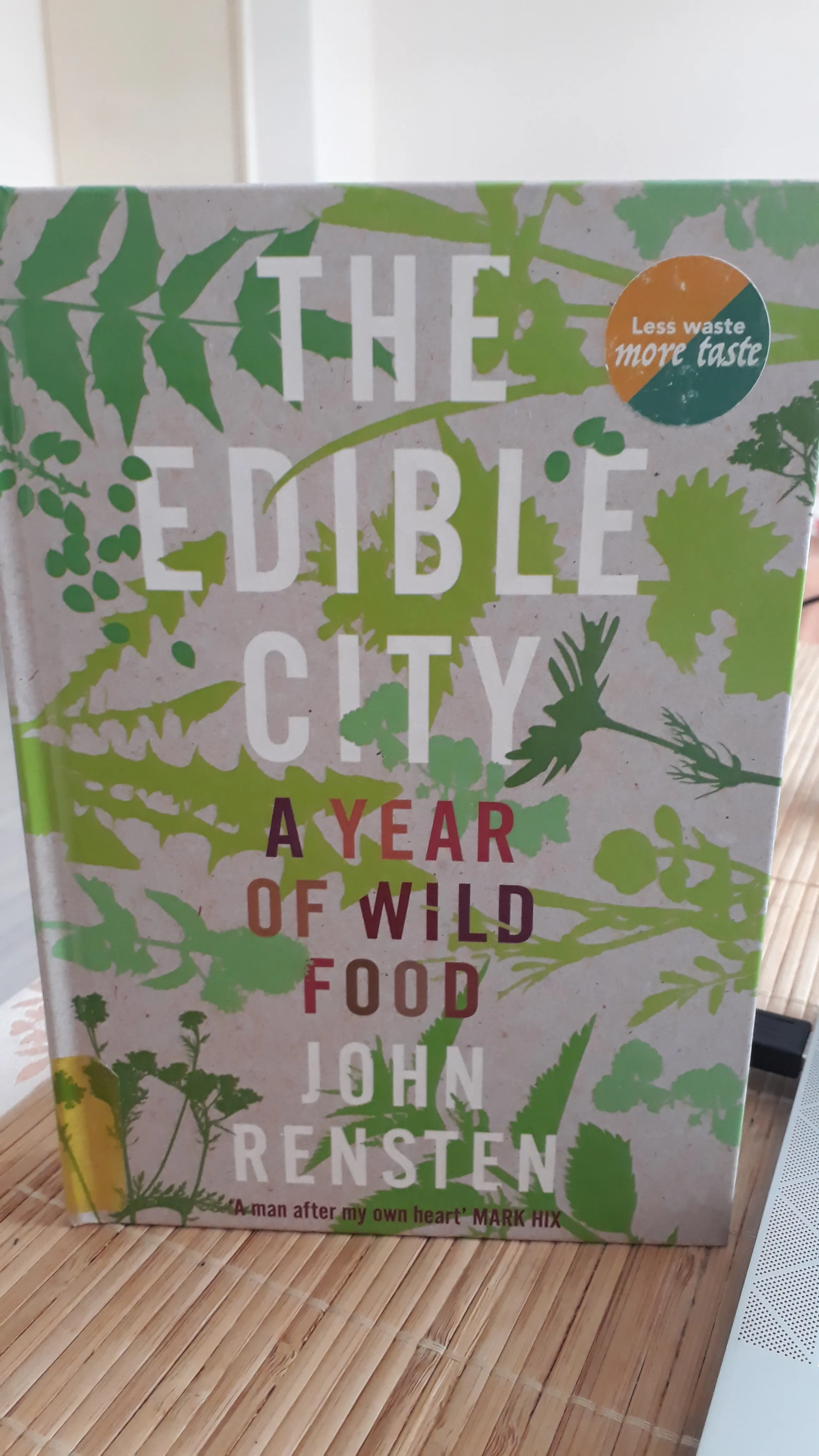
So shall we have a look what John recommend to focus on in November?
Here we go:
- Hawthorn (Crataegus monogyna)
- Sweet Chestnut (Castanea sativa)
- Wood Blewit (Clytocibe nuda)
- Field Blewit (Lepista saeva)
- Scots Pine (Pinus sylvestris)
- Juniper (Juniperus communis)
- Quince (Cydonia oblonga)
Let's start with Hawthorn; (Crataegus monogyna)
Parts used: ✅ Young leaves, flowers, fruit
Harvesting tip: 🍒 Taste the berries before picking them as the flavour can vary between trees, and look for bigger bunches rather than sparsely growing fruit
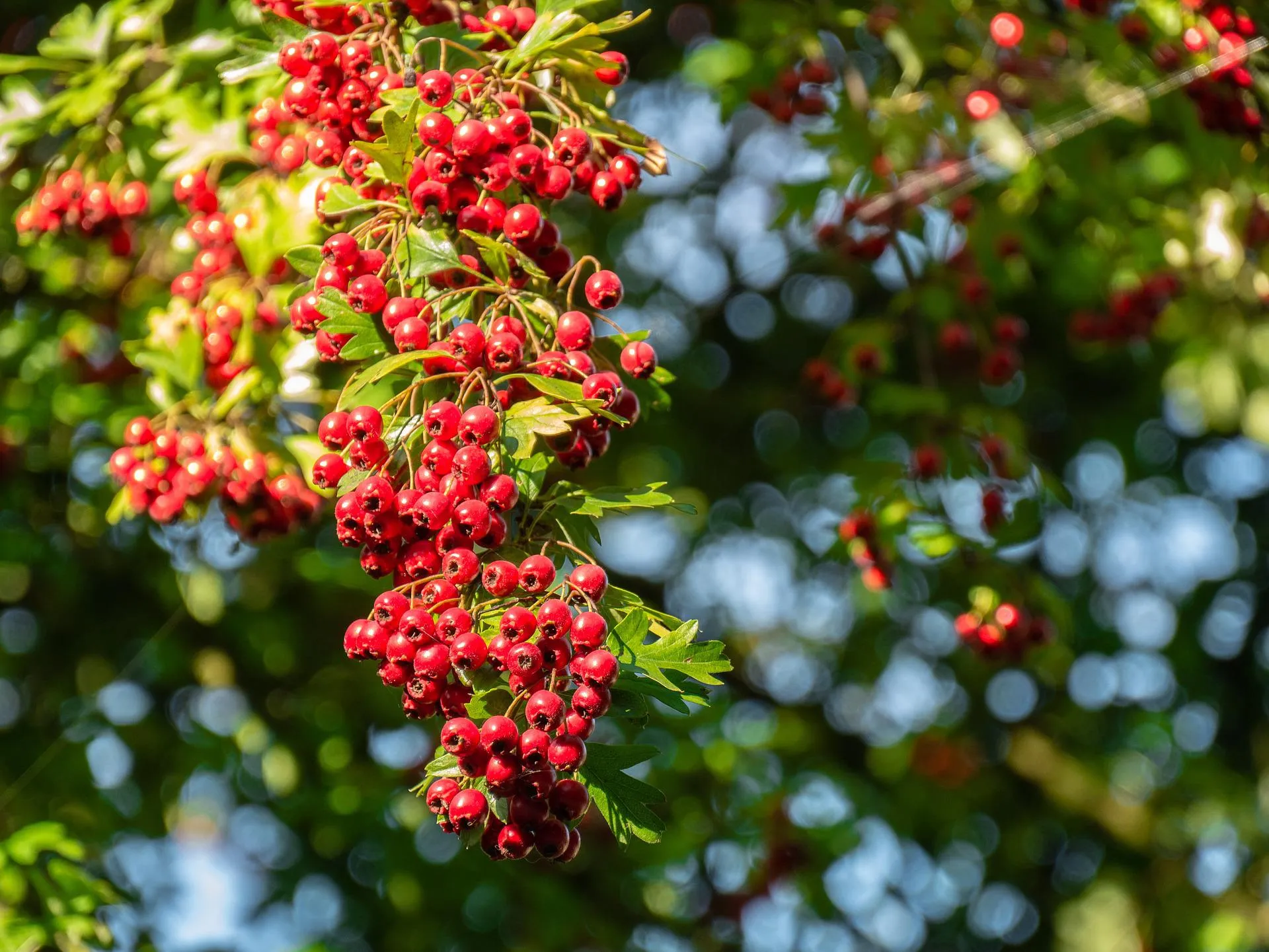
Hawthorn is such a superb native fruit, nothing like a juicy plum or a cherry but with a little work they can be made to sing just as a sweet song.
🍃 John collects very young and pale hawthorn leaves in February and March and uses them as a salad ingredient. Their flavour is sort of cross between pea and peanut. I'm on a mission to try them next year. The blossoms appear afterwards and is aromatic and with a taste of almond oil common to many members of this group of trees; gently cooked with water and sugar, they make wonderful syrups and cordials.
Today is all about the fruit - haws. With literally hundreds of varieties of hawthorn it's possible to find them in fruit from late August to late December.
👉 You can also check my article about hawthorn uses here.
Hawthorn relish
500g haws, 300ml cider vinegar, finely chopped mugwort and yarrow leaves (optional), 2 star anise, 1/2 tsp chilli powder, 100g brown sugar
John calls this relish but you could also say it was a chutney, or a smooth pickle, a ketchup, a spicy sauce or even a dip. It seems to change its vocation depending on whether you put it in a bottle or a jar, so you're welcome to fiddle with the recipe and even give it an entirely new name.
🌶️ Remove the stems from the haws and give them a good wash. Now bring them to the boil with 300ml water and the cider vinegar. John also added a small handful of finely chopped mugwort and yarrow leaves but they are not vital. In addition to wild herbs, you can grab whatever comes to hand in the kitchen e.g. chilli powder.
🥘 Stir and them simmer everything gently for 45 minutes before removing the star anise. Now the laborious bit, pushing the mushed fruit through a sieve using a big wooden spoon until you have a delicious purée to put back in a clean pan. A food mill makes the job much quicker. A little at a time, add the brown sugar, gently heating the mixture and stirring until the sugar is properly dissolved. The end result is roughly the texture of a thick home-made ketchup.
🍪 You can spread this on everything, eat it with cheese and biscuits, pour it onto meat like a spicy sauce, dip chips in it and even use it as a pizza topping.
Sweet chestnut; (Castanea sativa)
Parts used: ✅ Nuts
Harvesting tip: 🌰 Ripe chestnuts will either have fallen to the ground or will fall easily from the tree if knocked with a stick
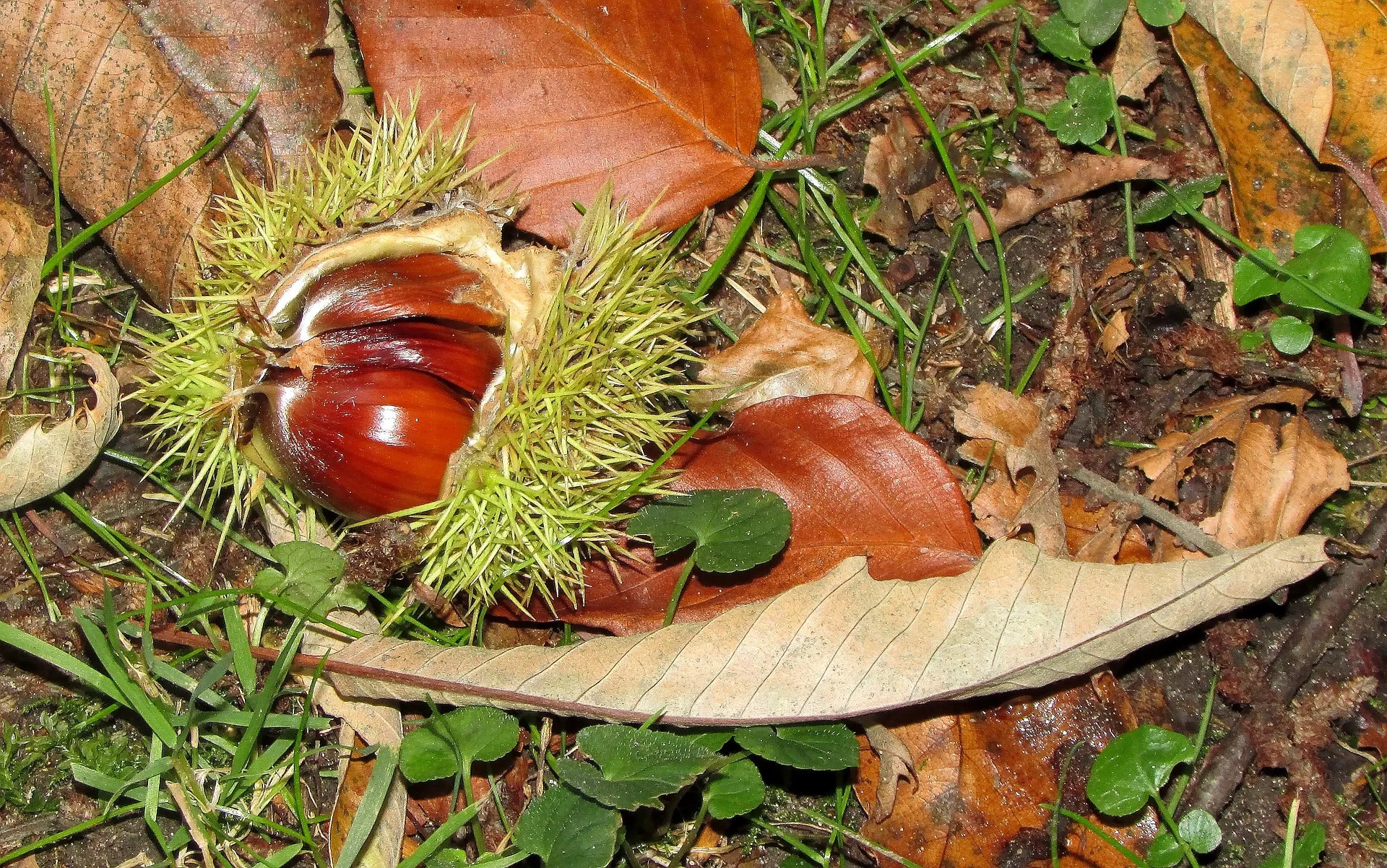
Hot chocolate made with sweet chestnut milk
Come the autumn, most decent greengrocers sell the larger imported varieties but nothing beats cooking and eating something tasty that you have picked with your own hands and, as the saying goes, size isn't important. These nuts are wintertime favourite in the UK, the basis of a great stuffing or nut roast and the obvious accompaniment to festive Brussels sprouts.
🌰 25-30 good-sized sweet chestnuts, 3-4 heaped dessert spoons chocolate powder, pinch of red chilli powder, pinch of cayenne pepper
☕ Halve the chestnuts still in their shell, and add them to roughly three times their volume of boiling water, cook them for 3 minutes. Once cooled, shell them, also discard the thin brown membrane covering the nuts (it can be bitter), and then put them and the cooking water into a blender for a good whizzing. That's it! Gently heat 300ml of your nut milk with the chocolate powder then add the red chilli and cayenne pepper.

Wood Blewit; (Clytocibe nuda)
Parts used: ✅ Entire fruiting body (stems and caps)
Harvesting tip: 🍄 This species fruits late in the season with the first frost
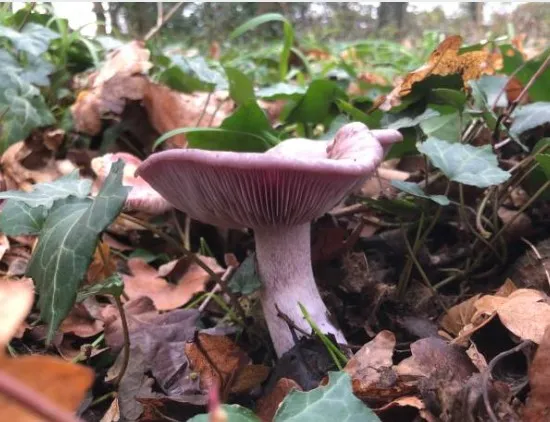
Field Blewit; (Lepista saeva)
Parts used: ✅ Entire fruiting body
Harvesting tip: 🍄 Grows in large rings on grassland

A pâté with mixed blewit mushrooms and sweet chestnuts
1 onion, 300g mushrooms, marjoram, 200g sweet chestnuts, 200g cream cheese, 1 tbsp wine vinegar, soy sauce (optional), black pepper, salt
This recipe combines ripe sweet chestnuts and two species of mushroom that pop up at about the same time of year, the wonderful field blewit and its not so close relative the wood blewit. Both are stunning to look at, sweet-smelling and lovely fruity taste.
⚠️ Unless you are 100% sure you have the right species, PLEASE DO NOT PICK THEM.
🍄 Finely chop and gently fry the onion, then add the chopped mushrooms and a few good pinche of marjoram (wild or otherwise), then continue cooking for just a couple of minutes. Now take the sweet chestnuts, halved but with the shells still on and boil for about 10 minutes before removing the shells and discarding any of the darker inner casing. Whizz the cream cheese and white wine vinegar in a blender; now add the chestnuts and the mushroom/onion mix and some black pepper.
Blend gently until it makes a smooth past, taste and season with more pepper, salt or soy sauce as required, before putting the mixture into a deep dish and then into the fridge for a few hours to set.
🤮 In addition to the general safety advice about mushrooms, I've met a few people who don't get on with these species of mushrooms, finding they get an upset stomach. As with trying any new food for the first time, go easy, try a little rather than eating an entire portion.
Scots Pine; (Pinus sylvestris)
Parts used: ✅ Leaves (needles)
Harvesting tip: ✂️ If you are collecting any quantity use secateurs

Juniper; (Juniperus communis)
Parts used: ✅ Leaves (needles), cones ("berries")
Harvesting tip: 🧤 Wear thick gloves as the needles are sharp. The berries only ripen blue in their third year
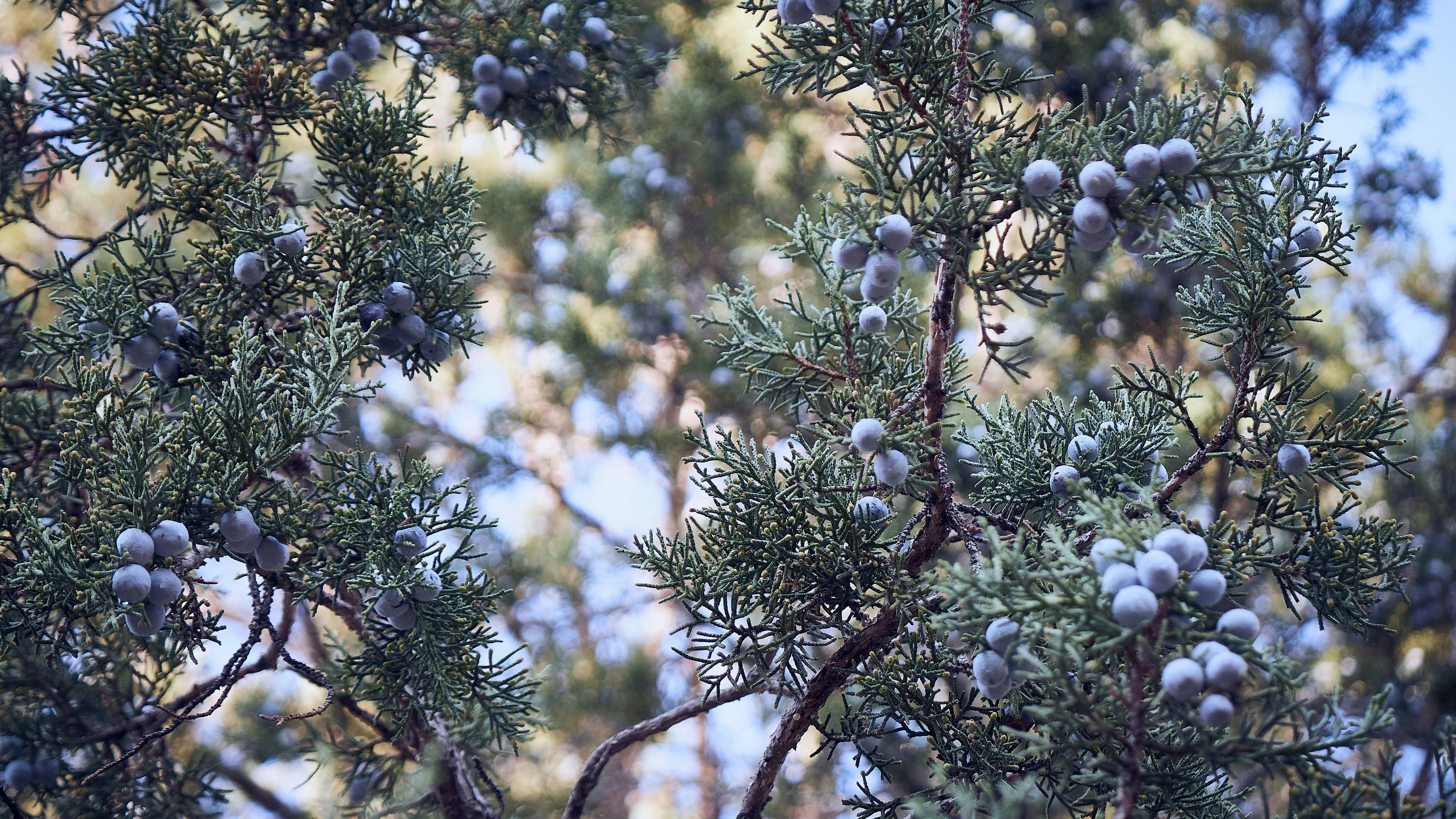
Pine needle vinegar with juniper and bay leaves
400ml apple cider vinegar, 2 handfuls of mixed pine or fir needles, 4 juniper twigs, a handful of dried juniper berries, 4 bay leaves, 2 heaped tbsp brown sugar.
🌲Add the apple cider vinegar to 100ml water, heating them both gently in a saucepan. Add the mixed pine and fir needles as well as the juniper twigs, Also into the pan went a handful or dried juniper berries (you can buy them) and the bay leaves. Let everything simmer gently for about 15 minutes before adding the brown sugar, allowing it to dissolve before pouring the liquid into a large sterilized glass bottle. The taste reminds John of being outdoors, and the bottle makes a great table decoration and conversation topic.
Quince; (Cydonia oblonga)
Parts used: ✅ Fruit
Harvesting tip: 🟡 The fruit is completely yellow when ripe and comes off the tree easily
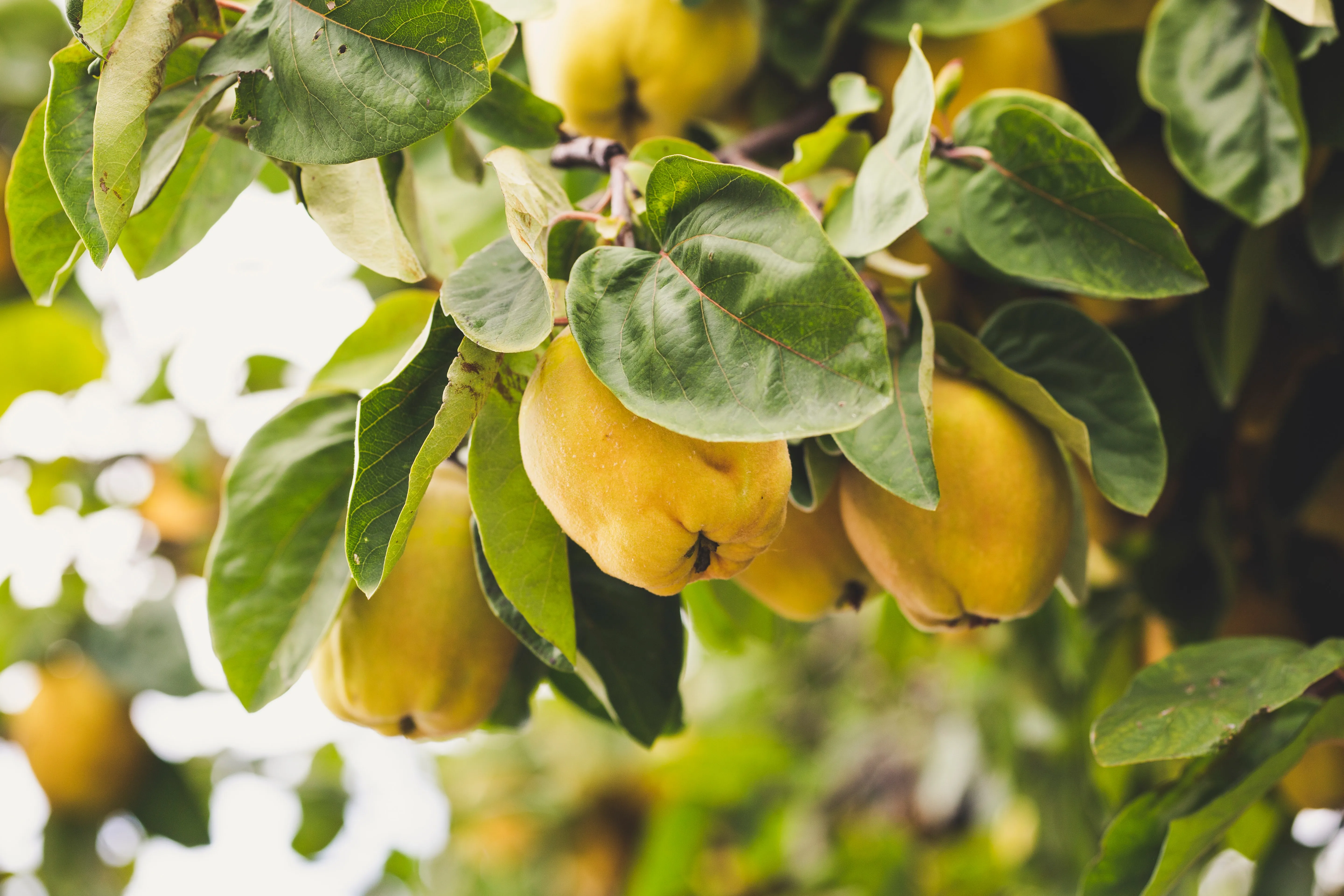
The most frequent use for quince is in making jellies or jams, most notably membrillo, a thick preserve made from the pulped fruit and originating from Italy, Spain and Portugal. Numerous regional variations exist all over Europe and South America; generically referred to as quince cheese, they are usually served as an accompaniment to hard cheese or cooked meats.
Candied quince with ginger
1kg quince, 500g brown sugar, about 1 tbsp ground ginger
🍯 Wash, peel and core the quince before cutting them into bite-sized pieces. Place them in a large bowl, sprinkle with the brown sugar, cover and leave to marinate for 48 hours, after which lots of liquid will have appeared. Strain this into a saucepan using a sieve, then put the quince pieces back in the bowl and set aside. Bring the juice in the pan to the boil and simmer for 4 minutes before pouring it back over the pieces in the bowl. Cover and leave to marinate for 24 hours. Repeat this process twice over the next two days and finally bring the quince pieces and the juice to the boil together and simmer for 5-10 minutes. Remove from the heat, stir in up to 1 tablespoon of ground ginger and pot in sterilized jars.
🧀 Stored in a cool, dark place the candied quince will keep for many months. Serve as an accompaniment to meat and cheese (in northern Italy they also use it as a tortellini fillings) or else with toast and croissants, or as a fragrant addition to apple pies and other bakes.
I hope it inspires you.🥰 Happy foraging! 🍂🚶♀️🚶♂️
From my heart ❤️ to your heart.❤️
